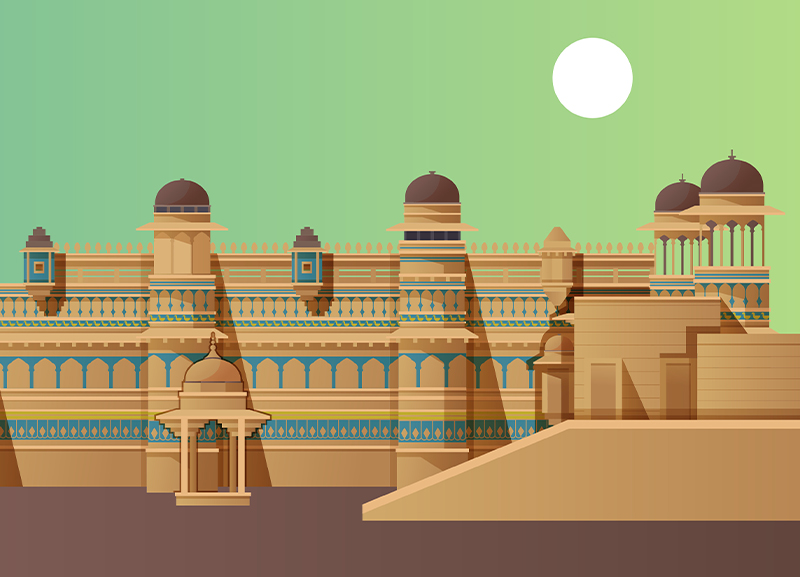
Mandav, also known as Mandu or Mandavgarh, is an ancient fort city in the Dhar district of Madhya Pradesh, India. It boasts a rich history that spans several centuries, with its architectural wonders, tales of romance, and strategic importance making it a cherished historical site. Mandu is celebrated for its unique blend of Afghan, Hindu, and Mughal architecture. Its strategic location on the top of the Vindhya Mountain Range, surrounded by steep cliffs and dense forests, made it an attractive stronghold for various dynasties over the centuries.
Mandu’s origins are believed to date back to the 6th century, however, it was during the 10th and 11th centuries under the Paramara dynasty, that Mandu became a more significantly fortified settlement. The Paramaras established Mandu as a military outpost, capitalizing on its strategic position in the Vindhya Range and fortifying it to protect against invasions
In the early 1300s, the city fell under the control of the Delhi Sultanate. The Khalji dynasty’s conquest marked the beginning of Mughal rule in Mandu. The sultans appreciated Mandu’s strategic advantage and began enhancing its fortifications. It was under the Delhi Sultanate’s influence that Mandu’s unique Indo-Afghan architecture began to take shape.
Mandu’s golden age began in 1401 when Dilawar Khan, the governor of Malwa under the Delhi Sultanate, declared independence and established the Malwa Sultanate, making Mandu its capital. His son, Hoshang Shah, succeeded him and is credited with beautifying the city. Hoshang Shah built magnificent structures like the Ashrafi Mahal. The Hoshang Shah tomb is India’s first marble mausoleum, which is also said to have influenced the architecture of the Taj Mahal.
The most prominent ruler of the Malwa Sultanate was Sultan Baz Bahadur in the 16th century, whose romantic tales with Rani Roopmati, a beautiful Hindu singer, are among the legends of Mandu. According to the legend, Rani Roopmati said that she would accept the proposal of marriage only if she was allowed to follow hinduism even after marriage and worship river Narmada every morning. Sultan Baz Bahadur accepted this condition and built a monument known as ‘Rani Roopmati Pavalion’ from which Rani Roopmati was able to view the Narmada river and worship it. Baz Bahadur’s reign ended with the invasion of the Mughal Emperor Akbar in 1561, marking the end of Mandu’s independence.
After this, Mandu became a part of the Mughal Empire. Although it lost its status as an independent capital, it retained importance as a military outpost and retreat. The Mughals constructed new buildings and maintained Mandu’s structures, valuing the city for its scenic beauty and cool climate. Mandu’s fortifications and beauty impressed several Mughal emperors, including Jahangir, who referred to Mandu as the “City of Joy.” The architecture of Mandu also inspired Mughal designs, particularly the skillful blend of Afghan and Hindu styles.
As the Mughal Empire weakened in the 18th century, Mandu came under the control of the Marathas. While the Marathas held power over Mandu, they did not invest in maintaining it as previous dynasties had. Eventually, the British took control of the region in the 19th century, leading to further neglect of Mandu’s monuments.
Today, Mandu stands as a prominent historical and archaeological site, maintained by the Archaeological Survey of India (ASI). Known for its palaces, mosques, and monuments, Mandu draws tourists and history enthusiasts from around the world.
November, 2024































